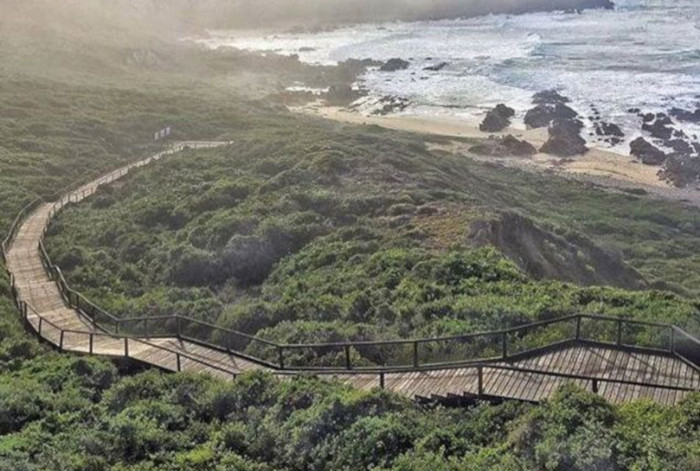Some of the earliest forms of evidence of human societies and customs can be found along the Western Cape, and the Cradle of Human Culture route aims to take locals and tourists on a journey of archeological discovery.
Wesgro’s Chief Marketing officer for Tourism, Judy Lain, says the establishment of the route will boost tourism in the Western Cape.
“The ability to package the incredible offering we have around early culture and how its transpired into modern day in the Western Cape, with a globally-renowned landmark such as the Cradle of Humankind World Heritage Site, is an opportunity to position the destination globally and attract more visitors.”
Wesgro’s Destination Marketing Unit, the Department of Economic Development and Tourism (DEDAT), the provincial Department of Culture Affairs and Sport (DCAS), and the Cradle of Humankind World Heritage Site (WHS) have worked together to create the Cradle of Human Culture route. A soon-to-be developed micro-site will provide detailed information on the route experience.
A short video, imagery and a booklet on the route will be available on various digital platforms.
Three archeological sites in the Western Cape, Blombos Cave, the Pinnacle Point site on the South Coast and the Diepkloof Rock Shelter on the Cape West Coast, collectively house some of the world’s earliest evidence of human evolution.
These three sites are currently in the process of being nominated for World Heritage Site Status.
Each site is home to ancient artifacts such as ornately-decorated ostrich eggs, marine shell beads, engraved ochre, bone tools, and finely-made bifacial points, sharp stone tools that were used by early humankind.
UNESCO has nominated these sites because they hold an “unmatched record of palaeoenvironmental and human history in an important phase of human evolution, the development of anatomically-modern humans”.
Wesgro CEO Time Harris says the Cradle of Human Culture route will be launched in April 2019.
“South Africa is globally regarded as a place of great heritage significance. Through identifying culturally rich sites in our Province, we become a part of the story of the early development of humankind. We are excited to introduce both local and international visitors to the Cradle of Human Culture, and hope to welcome many Easter holidaymakers following the official launch.”
The three sites that may receive World Heritage Site Status and may feature on the Cradle of Human Culture route:
1. Blombos Cave
Located in the Blombosfontein Nature Reserve, the archeological site was discovered in 1991 by Wits researcher, Professor Christopher Henshilwood. Archeologists have discovered marine shell beads, engraved ochre and bone tools dating back 27 000 years in the cave.
2. Pinnacle Point
Located in the south of Mossel Bay, excavations of this site began in 2000 and revealed that Middle Stone Age societies lived in the area between 170 000 and 40 000 years ago.
It is also the site where the oldest evidence of heat treatment of rock to make stone tools has been recorded. Pinnacle Point is declared a Provincial Heritage Site and has a cave located in the area.
3. Diepkloof Rock Shelter
Also a Provincial Heritage Site, the Diepkloof Rock Shelter has had various evidence of human life found in it, such as ostrich egg shells with engravings and Paleolithic tools.
???The Ostrich eggshells fragments of Diepkloof Rock Shelter (Western Cape) represent one of the earliest evidence of graphic tradition, they are more than 40,000 years old! You can see the replicas of the whole eggs @SciBono until 20/01 in the #DawnOfArt room. #EggGang #Egg pic.twitter.com/QEQCQUdeGM
— IFAS-Research (@IFAS_Research) January 16, 2019
The dawn of human culture can be found across all six regions of the province, such as in the West Coast Fossil Park, which is home to one of the world’s richest concentrations of fossils dating back five-million years.
Details on the areas and sites that will on the culture route are yet to be revealed.
Minister of Economic Opportunities Beverely Schäfer says the route will offer those who follow it insight into human behaviour.
“The Cradle of Human Culture will provide a fascinating journey back to some of the very earliest human behaviours. By highlighting these aspects of our culture and heritage, we are able to provide another layer to our multi-dimensional tourism offering and provide new and unique experiences to a wider range of visitors.”
The Director for Museums, Heritage and Geographical Names Services and the Department of Cultural Affairs and Sport, Dr Mxolisi Dlamuka says that the route will showcase the immense role South Africa played in the evolution of humankind.
“We are hoping that the Cradle of Human Culture will become a tool for all South Africans to enjoy these beautiful sites, explore our common origins, dive into our past and understand what makes us humans. Through this journey, visitors to the Cradle of Human Culture will discover the enormous contribution that South Africa played in making us all humans.”
Picture: Facebook, Garden Route Meander Community, Pinnacle Point in Mossel Bay






